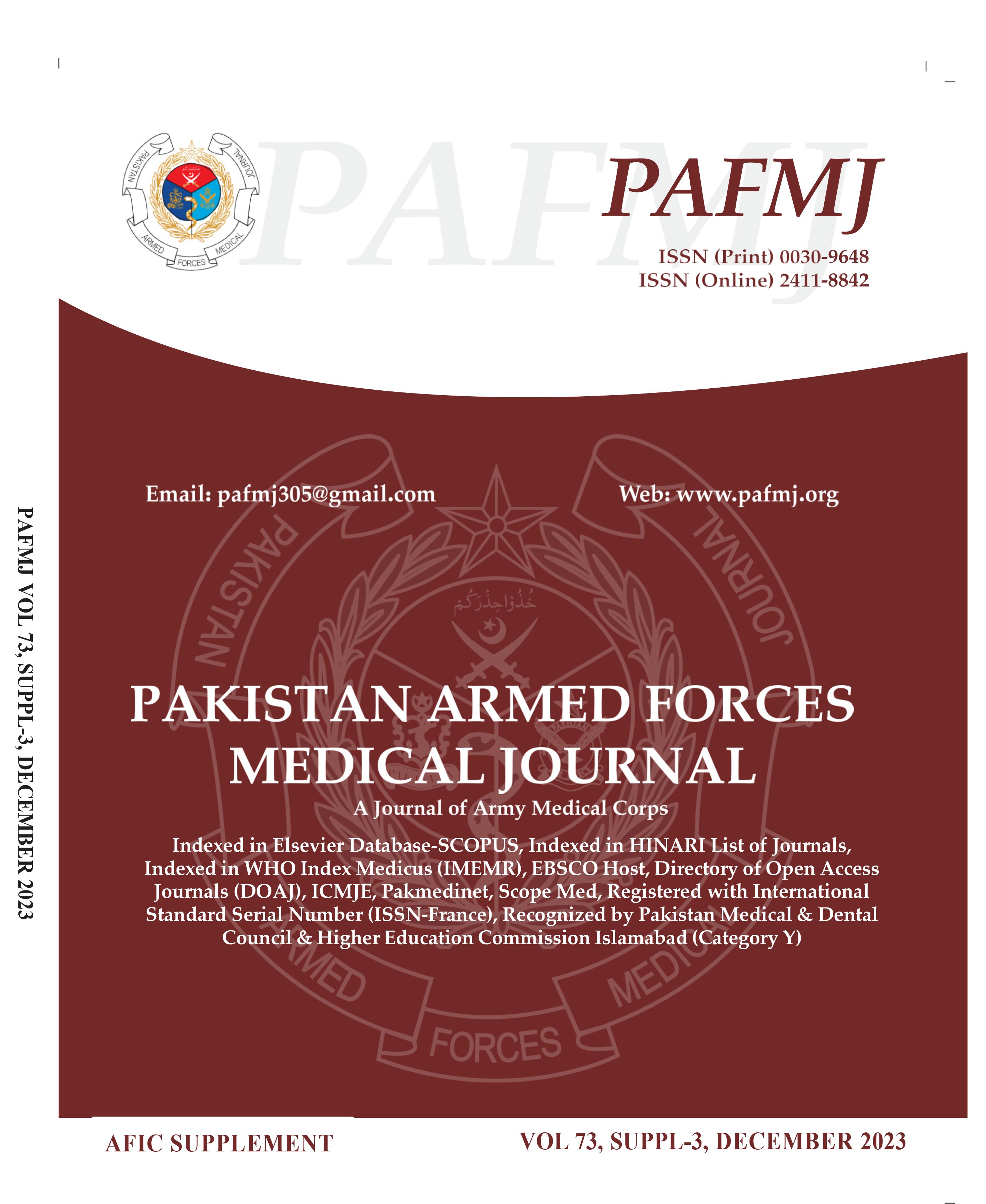Association of Red Cell Distribution Width with Thrombus Burden in Patients of ST Elevation Myocardial Infarction Undergoing Primary PCI
DOI:
https://doi.org/10.51253/pafmj.v73iSUPPL-3.10497Keywords:
Primary PCI, Red Cell Distribution Width, ST Elevation Myocardial Infarction, Thrombus BurdenAbstract
Objective: To study the association of Red Cell Distribution Width (RDW) with thrombus burden in patients of ST Elevation
Myocardial Infarction (STEMI) undergoing Primary Percutaneous Coronary Intervention (PPCI).
Study Design: Analytical Cross-sectional study.
Place and Duration of Study: Armed Forces Institute of Cardiology/National Institute of Heart Diseases Rawalpindi,
Pakistan, from Aug 2022 to Dec 2022.
Methodology: Using non-probability consecutive sampling, three hundred and sixty-nine (n=369) patients were included in the study. RDW values were obtained from complete blood count sent at presentation in emergency department.
Thrombolysis in Myocardial Infarction (TIMI) thrombus grading was used to determine the angiographic thrombus burden.
For quantitative variables, means and standard deviations were calculated, while frequencies and percentages were calculated for qualitative variables. Receiver Operating Characteristic (ROC) curve for RDW values for predicting thrombus burden was plotted. Correlation between RDW with thrombus burden was established. Eta, Chi-square and independent samples t-test was used to determine p-value.
Results: The study included 369 STEMI patients, out of which 287(77.8%) were males and 82(22.2%) were females. 203(55.0%)patients had high thrombus burden while 166(45.0%) patients had low thrombus burden. Patients in the high RDW groupmore frequently had ventricular arrhythmias, and heart blocks. Mean RDW was 13.57±0.71 in low thrombus burden groupwhile it was 14.67±1.21 in high thrombus burden group. Area under the curve derived from ROC curve for RDW forpredicting high thrombus burden was 0.79(CI=0.74-0.83, p<0.001)
Conclusion: The study demonstrates that high RDW is a sensitive and specific predictor of high angiographic thrombus
bur..........















